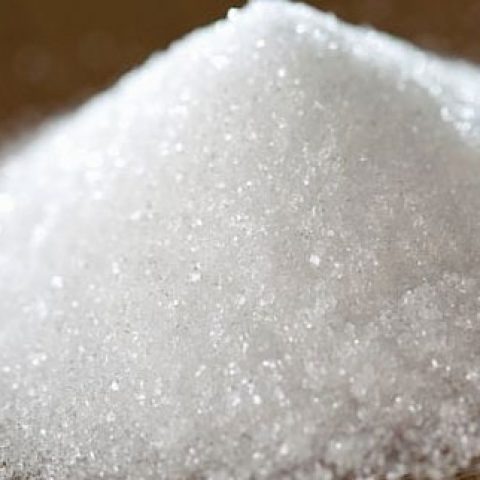Specifications of S-30 White Cane Sugar of India Origin are mentioned below:
Categories: Human Nutrition, Sugar
Our S-30 White Cane Indian Sugar has Finest Granules and Excellent Sparkling White Color and thus it is known for its Top Grade Quality. S-30 White Cane Sugar is used in preparation of different kinds of Desserts, Beverages, Sweet Dishes, etc. S-30 White Cane Indian Sugar offered at Competitive Prices by Farmimex.


Our S-30 White Cane Indian Sugar has Finest Granules and Excellent Sparkling White Color and thus it is known for its Top Grade Quality. S-30 White Cane Sugar is used in preparation of different kinds of Desserts, Beverages, Sweet Dishes, etc. S-30 White Cane Indian Sugar offered at Competitive Prices by Farmimex.
S30 white sugar, commonly referred to as granulated sugar, is a staple ingredient in many households and food industries worldwide. Derived primarily from sugarcane or sugar beet, this versatile sweetener plays a crucial role in cooking, baking, and food preservation. This overview explores the characteristics, production processes, uses, health implications, market trends, and challenges associated with S30 white sugar.
S30 white sugar is characterized by its fine, crystalline texture and white color. It is composed primarily of sucrose, a disaccharide made up of glucose and fructose. The purity of S30 sugar typically exceeds 99%, making it one of the most refined forms of sugar available. This high level of refinement gives it its characteristic sweetness and solubility.
S30 white sugar has a clean, sweet flavor without any aftertaste. This neutrality makes it an ideal sweetener for a wide range of recipes, allowing the natural flavors of other ingredients to shine through.
The production of S30 white sugar begins with the extraction of juice from sugarcane or sugar beet. The harvested plants are crushed to extract their juice, which is then clarified to remove impurities.
The clarified juice is heated to evaporate water, resulting in a syrup. This syrup is then cooled, allowing sugar crystals to form. The crystallization process is critical, as it determines the size and quality of the sugar crystals.
Once crystallized, the raw sugar undergoes a refining process. This typically involves washing, bleaching, and filtering to achieve the desired whiteness and purity. The final product is then dried and packaged as S30 white sugar.
S30 white sugar is widely used in various culinary applications, including:
Beyond culinary applications, S30 white sugar is also used in food manufacturing. It serves as a sweetener in processed foods, confectionery, and sauces. Additionally, it plays a role in fermentation processes for brewing and distillation.
S30 white sugar has applications beyond food, such as in cosmetics and pharmaceuticals. It can be found in skincare products and as a sweetening agent in certain medications.
While S30 white sugar provides energy through calories, it lacks essential nutrients, making it a source of “empty calories.” Its high glycemic index means it can cause rapid spikes in blood sugar levels, which may be a concern for individuals with diabetes or insulin resistance.
Health organizations recommend limiting added sugars in the diet to reduce the risk of obesity, heart disease, and dental problems. The American Heart Association suggests that women limit added sugar intake to about 6 teaspoons (25 grams) per day, while men should aim for no more than 9 teaspoons (38 grams).
The health implications of sugar consumption have sparked debates in recent years. Some studies link high sugar intake to various health issues, leading to calls for better labeling and regulation of sugary products.
With rising health consciousness, there is an increasing demand for sugar alternatives, including natural sweeteners like stevia, monk fruit, and agave syrup. Many consumers are seeking options with lower calories or lower glycemic indices.
The sugar industry faces scrutiny regarding its environmental impact, particularly in terms of water usage and land degradation. Sustainable farming practices and certifications are becoming more important to consumers.
The market for S30 white sugar is influenced by global trade policies and economic conditions. Variations in supply and demand, weather events affecting sugarcane crops, and trade agreements can impact pricing and availability.
The price of S30 white sugar can be volatile due to fluctuations in global supply and demand, weather conditions affecting crop yields, and changes in government policies regarding sugar production and trade.
As awareness of sugar’s health impacts grows, governments are implementing regulations, such as sugar taxes and labeling requirements. These regulations can affect consumer behavior and industry practices.
The rise of sugar alternatives presents a challenge for the traditional sugar market. As consumers increasingly opt for natural or low-calorie sweeteners, the demand for S30 white sugar may decline.
Rapindustria’s S30 white sugar is a versatile and widely used ingredient that plays a significant role in culinary and industrial applications. While it provides sweetness and enhances flavors, its health implications call for mindful consumption. As market trends shift toward healthier alternatives and sustainable practices, the sugar industry must adapt to meet changing consumer preferences.
Specifications of S-30 White Cane Sugar of India Origin are mentioned below:
| Specifications of White Cane Sugar – S-30 – Small Size | |
| Origin | India |
| ICUMSA | 100 RBU – 150 RBU |
| ICUMSA Colour | S-30 : 80 to 100 |
| Crystal Size | S 30 = 0.8 to 1.2 mm |
| Ash content | 0.5% Maximum |
| Moisture | 0.5% to 0.7% Maximum |
| Solubility | 100% Free Flowing |
| Granulation | Free Flowing |
| Polarization | 99.50% Minimum |
| Colour | Sparkling White |
| Substance | Solid, Crystal |
| Smell | Free of any Smell |
| Crop | Recent Crop |
Other products you might be interested in.
All rights reserved ©2024 - RAP - Indústria e Comércio de Alimentos Ltda